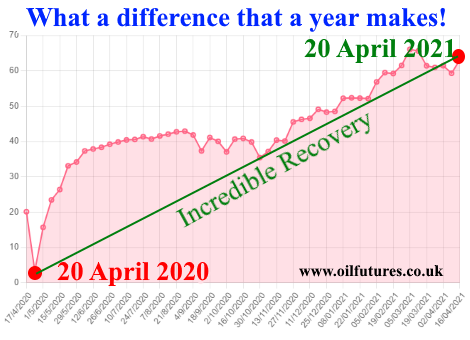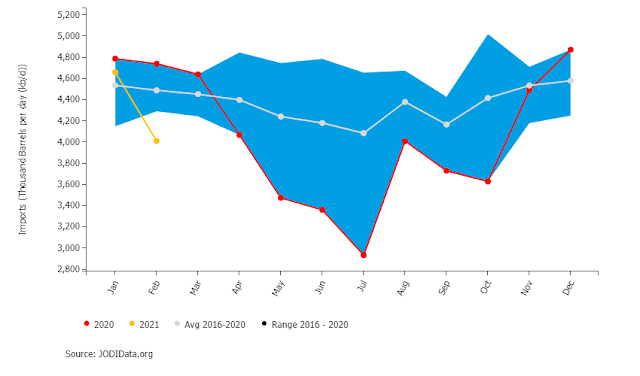It has been a year since textbooks on fossil fuels
were revised, adding an indelible bookmark to the contents that span decades;
the crude oil price crashed on April 20, 2021 with price going to negative for
the first time ever – something that has never happened in the history of oil
trading.
Nor was it predicted by any analyst, even in the
worst case scenario.
It was, quite rightly, branded, the Great Oil Crash.
Not only did the oil price recover quickly from the
disaster, but also steadily increased while defying a catalogue of
uncertainties, ranging from resurgence of Covid-19 infections to political tension
in the Middle East that sometimes bordered on military conflicts.
This week, the price picked up again amidst the
weaker US dollar. In addition, the markets are in a buoyant mood due to the
rise in China’s petroleum imports and the fall of US crude oil stocks.
The news that comes from the world’s first two
consumers of the crude oil clearly shows that recovery of demand is now irreversible;
it is inconceivable to see a repeat of ‘April 20, 2020’, the Great Oil Crash.
The Coronavirus situation in India, the world’s
third largest consumer, however, is still a major concern; there are over
300,000 infections just on Tuesday with a significant death rate: there are
concerns about the supply of oxygen to hospitals across this vast country; hospitals
are running out of beds; crematoriums are full. It’s a very serious situation,
indeed.
The impact on the Indian economy that saw the worst
crash for 70 years is unimaginable; it’s no wonder why the crude oil imports
are falling in India.
In these circumstances, the optimistic sentiments in
the world’s top two consumers of crude oil so far managed to eclipse the Indian
factor.
There are clear signs that the developments will
stay that way for the next few weeks, unless the situation in India takes a
turn for the worse.









